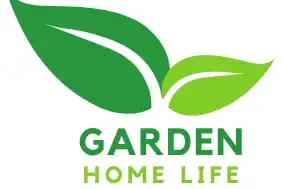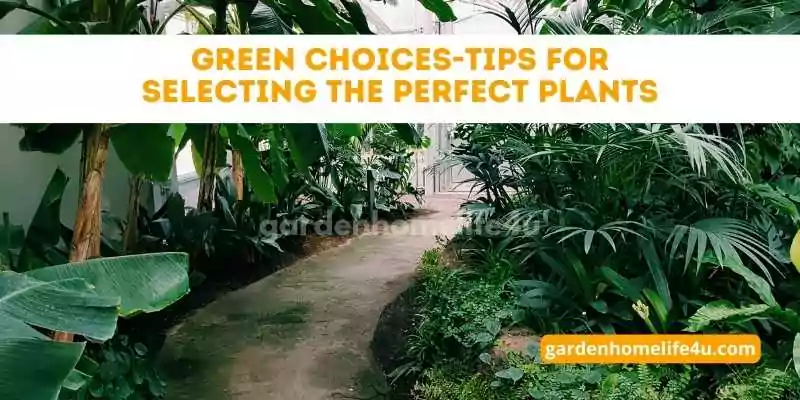In this attempt towards botanical exploration, we celebrate the art of conscious plant selection – a process that goes beyond mere aesthetics, and instead, embraces the significance of each living being that graces your landscape. With every plant you choose, you contribute to the tapestry of life, creating a sanctuary where flora and fauna coexist in harmony.
Our guide is your compass, navigating through the vast array of plant options, allowing you to make choices that align with your gardening aspirations and environmental values. From ornamental blooms that enchant the senses to native species that connect your garden to its ecological roots, each selection is an opportunity to infuse intention and purpose into your outdoor sanctuary.
Join us as we explore the magic of choosing plants that thrive in your garden’s unique conditions – whether you’re blessed with sun-drenched landscapes or dappled shade beneath tall trees. Understanding your garden’s microclimates and soil characteristics will unlock the potential to cultivate a diverse array of green wonders.
So, let’s embrace green choices, where purposeful plant selection brings your garden to life, reflecting your values and aspirations with every leaf, petal, and stem. With our tips as your guide, you’ll transform your landscape into an oasis of green beauty and ecological harmony, leaving a positive impact on the world, one green choice at a time.
Before investing your hard-earned money in beautifying your garden, it’s wise to first invest your time researching the best plants suitable for your case. After all, these plants will be the soul of your garden. This guide on “How to select plants for your garden” will assist you in making the right decision for your garden.
Selecting the plants will depend upon a number of factors:
- The size of your garden.
- The pH of the soil in your garden.
- The texture and consistency of your soil.
- The look you want to achieve.
- The amount of time and effort you’re willing to give for the maintenance of your plants.
- Hardiness.
A handful of quick tips regarding the above factors:
- To know your soil’s pH, instead of guessing it by looking at the plants already thriving there, simply buy a pH meter for the soil.
- Most plants prefer neutral soil, although some (e.g., Rhododendrons, etc) would rather have only acidic soil, and others (e.g., Clematis, etc) like alkaline soil better. Some plants (e.g., Hydrangeas) even deliver different colors of flower petals depending on the pH.
- The level of nutrition and drainage depends on the texture and consistency of the soil. After analyzing your soil, make the necessary changes, if needed, like adding compost, etc. (insert INTERNAL LINK to our compost blog).
- Talking about maintenance and efforts, some plants, (e.g., Rose) need regular maintenance. Others (e.g., Echinacea) will self-seed, and you might have to pull out the extra and unwanted plants that’ll pop up where you don’t want them to. If you’re looking for easy-to-grow, low-maintenance plants, consider Barberry, Peony, Juniper, Dianthus, Hydrangea, etc.
- Make sure your plants are hardy enough to survive winters.
Here we’ve simplified your task of choosing plants for your garden:
GARDEN SIZE MATTERS.
Simply measure the size of your plot, decide where you want to place any furniture, garden border, or any other landscaping feature (insert a link to our landscaping blog) and deduce how much room you actually have to plant. Make sure your plants get their own little space so the roots can spread out and absorb the nutrients and water easily. And the leaves need space too, so they receive ample sunlight to “cook” their food. Otherwise, overcrowding of plants will make them stunted and less healthy.
How to select plants – HOW TO CHOOSE EVER-GREEN PLANTS?

Evergreen plants are important because they maintain their leaves, hence also the color and texture of your garden, throughout the year. They offer beauty, privacy, accents, screening, and variety by providing different hues to your garden- ranging from deep emerald green to light golden green. Most garden borders and hedges comprise evergreen plants to stay in consistent shape and look through the four seasons.
You can choose from the two varieties of evergreen plants or get both of these, namely (1) the narrow-leaf evergreens, which have needle-like leaves, e.g., Juniper; and (2) the broadleaf ones, comprising the rest of the evergreens. Below are a few suggestions:
- Barberry: Broadleaf and beautiful.
- Boxwood: Unique smell, deep green color, can be given any shape easily.
- Juniper: Comes in a tonne of variety!
- Holly: Beautiful, sharp leaves with red berries, hence giving that holiday feel. If you want the berries, get both the male and female plants or make sure your neighboring garden has the “opposite” plant 😉
- Spruce: Comes both in dwarf and tall varieties.
- Pine: Grows slowly so doesn’t overcrowd the surroundings fast.
- Rhododendrons: Low maintenance, beautiful flowers.
How to select plants – FLOWERING PLANTS:
A garden without flowers is like The Titanic without Jack 😀 – Incomplete and lackluster. These blooming beauties will eventually attract the bees and birds for pollination and add life and color to your garden.
A few factors must be considered before planting these plants, like the amount of sunlight exposure that a particular flowering plant needs to survive- Full shade, partial shade, light shade, full sun, or partial sun. And the amount of water needed. Ideally, watering your flowering plants towards the root (and not the leaves) before sunrise and after sunset works best. Here are a few suggestions:
- Azalea: A variety of the Rhododendron mentioned above in the evergreen plant’s section, it loves shade.
- Hydrangea: Stunning flowers! You can go for multiple colors and hues of petals. They only have a part-time love affair with the sun.
- Camellia: Rosey flowers, lovely fragrance. Bloom in early spring or around the holiday season
- Lilac: Sun-loving, lovely scent.
- Forsythia: Gorgeous yellow. Also has a dwarf variety.
How to select plants – BEST AVAILABLE DECIDUOUS PLANT SELECTION:
- Pink Flowering Almond: Quick growing, pretty.
- Lilac: We’ve talked about this beauty above in the flowering plant section.
- Rose: Classic beauty, sun-loving.
- Hibiscus syriacus: Blooms in late summer. Perfect to fill the gap since, at that time of the year, most of the plants are already finished blooming.
How to select plants – PERENNIAL PLANTS:
These live longer as they can stay dormant for long periods of time before reblooming, i.e., their top parts die every winter but they grow back from their roots in the upcoming spring or summer. E.g., Strawberry, basil, potato.
Choosing perennial plants depends on similar factors we’ve discussed previously.
All perennials don’t bloom at the same time or for the same duration of time. You can choose perennials that bloom at different times of the year so that you may enjoy their beauty in succession by filling the gap.
Some perennials may need support to grow, like that from a sturdy branch in your garden, or from a wooden or metallic stake etc.
Inspect your perennials before buying. Examine to make sure the leaves are healthy and not discolored or damaged by caterpillars etc. Check the root and soil. The soil should smell nice, wet, and musty; not like sewer gas as the latter could indicate a rotten root.
Check out these 14 perennials that can survive harsh winters.
CHOOSING NATIVE VERSUS FOREIGN PLANTS:
You may choose native, foreign, non-native, or a mix of the two types of plants for your garden, keeping in my mind the pros and cons of both. Foreign plants are used to provide variety, a certain cultural touch, and aesthetical value. Although some foreign plant species can become quite invasive and damage the native habitat, most of the time they’re harmless.
HOW TO SELECT THE RIGHT TYPE OF PLANTS FOR THE RIGHT SEASON?
Strategically plant to get visual delight from your garden throughout the year.
Plants that bloom in winter
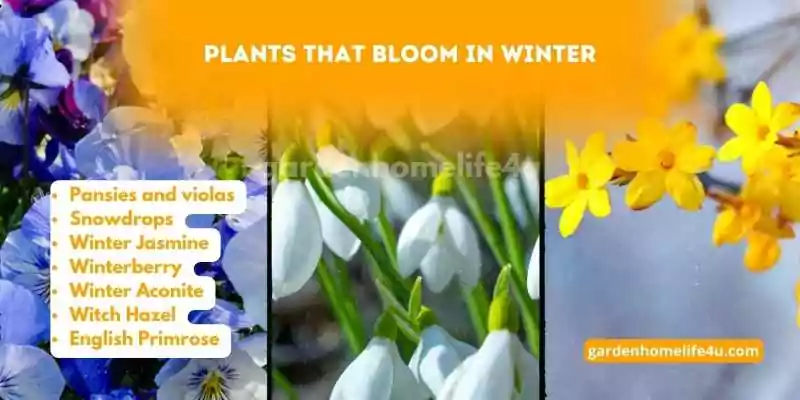
- Pansies and violas
- Snowdrops
- Winter Jasmine
- Winterberry
- Winter Aconite
- Witch Hazel
- English Primrose
- Camellia
- The glory of the snow
- Pussy Willow
- Mahonia
Plants that give stunning Colors in the fall
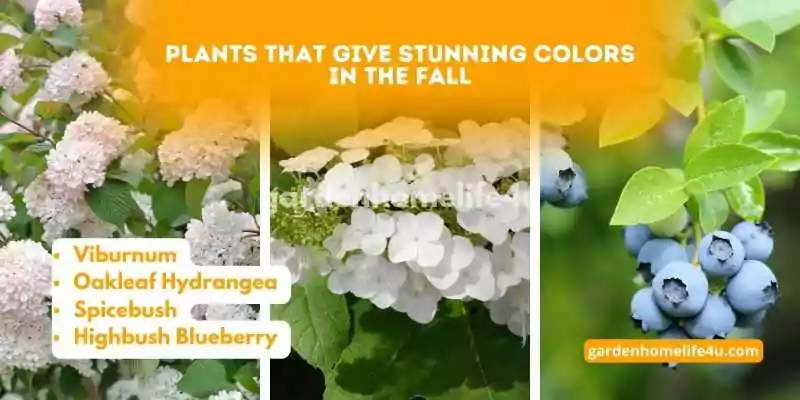
- Viburnum
- Oakleaf Hydrangea
- Spicebush
- Highbush Blueberry
d) Plants that bloom in the summer:
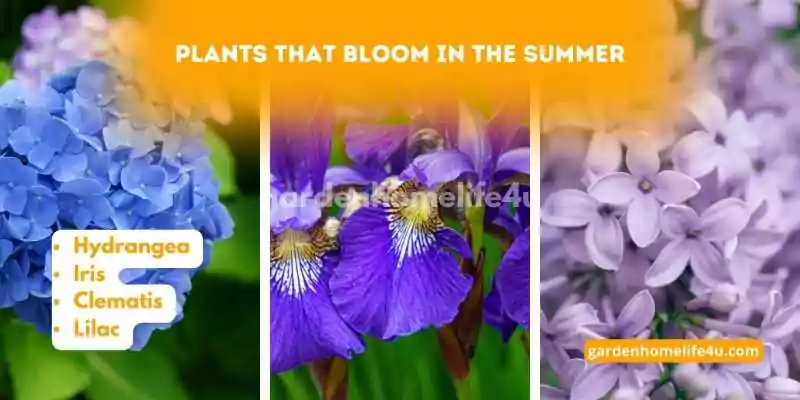
- Hydrangea
- Iris
- Clematis
- Lilac
OTHER RESOURCES :
Here are some good online stores for you to select different kinds of plants suited to various needs and applications.
https://www.hardysplants.co.uk/perennials
Below is a very informative RHS link.
https://www.rhs.org.uk/garden-inspiration/plants-we-love/10-tough-and-attractive-perennials
CHOOSE THE RIGHT SIZE OF PLANTS AND TREES FOR YOUR GARDEN:
When buying plants, don’t just consider their current size. Think about their size when they’re in the ground in your garden and fully grown. Your garden should have enough room to accommodate the fully matured size of the plants.
FINAL THOUGHTS: We hope that this guide will help you choose the right plants for your garden and has already clarified the process in your mind. It is time to apply the knowledge to practice and watch your space transform into the luscious garden of your dreams. Do share this with family and friends. Happy gardening! 😊
